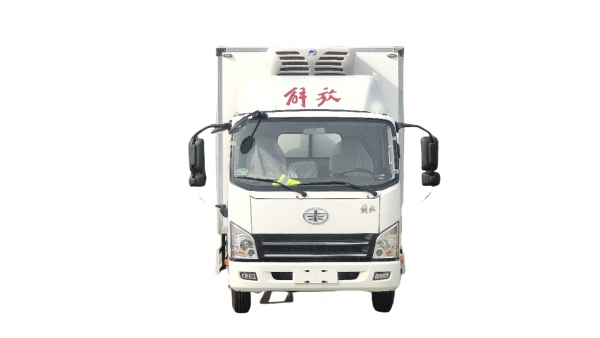Introduction
Truck mounted cranes are essential equipment in various industries, including construction, logistics, and maintenance. These versatile machines are designed to lift and move heavy loads with precision and efficiency. However, one critical factor that significantly impacts the performance and safety of truck mounted cranes is their weight capacity. Understanding the weight limits of these cranes is essential for ensuring safe operations and maximizing efficiency on the job site.
In this article, we will delve into the importance of truck mounted crane weight, including how it is calculated, factors that affect weight capacity, and best practices for ensuring safe and efficient crane operations. By gaining a thorough understanding of crane weight limits, operators and businesses can enhance safety, avoid accidents, and optimize productivity in their operations.
Calculating Truck Mounted Crane Weight Capacity
The weight capacity of a truck mounted crane is a crucial specification that determines the maximum load it can safely lift and transport. The capacity of a crane is typically expressed in terms of its maximum lifting capacity, which is measured in tons or pounds. Understanding how to calculate the weight capacity of a crane is essential for ensuring safe and efficient operations.
The weight capacity of a truck mounted crane is influenced by various factors, including:
1. Crane Configuration: The design and configuration of the crane, including the boom length, jib extension, and counterweight, play a significant role in determining its weight capacity. Cranes with longer booms and heavier counterweights typically have higher lifting capacities.
2. Structural Strength: The structural components of the crane, such as the boom, jib, and chassis, must be capable of supporting the weight of the load. The material and construction of these components impact the overall weight capacity of the crane.
3. Stability: Crane stability is critical for safe operations, especially when lifting heavy loads. Factors such as the crane's center of gravity, outrigger deployment, and ground conditions can affect its stability and weight capacity.
To calculate the weight capacity of a truck mounted crane, operators must consider the following factors:
1. Gross Vehicle Weight Rating (GVWR): The GVWR is the maximum allowable weight of the crane, including the vehicle, crane, fuel, operator, and any additional equipment. Exceeding the GVWR can compromise the crane's stability and safety.
2. Net Payload Capacity: The net payload capacity is the maximum weight that the crane can safely lift and transport. This value is determined by subtracting the crane's tare weight (empty weight) from its GVWR.
3. Load Chart: Manufacturers provide load charts that specify the crane's lifting capacities at different boom lengths, radii, and angles. Operators must refer to the load chart to determine the crane's maximum lifting capacity under various conditions.
Factors Affecting Truck Mounted Crane Weight Capacity
Several factors can influence the weight capacity of a truck mounted crane, including:
1. Boom Length: The length of the crane's boom directly impacts its lifting capacity. Longer booms allow the crane to reach higher heights but may reduce its lifting capacity due to increased leverage and structural stress.
2. Counterweight: The counterweight of a crane is essential for balancing the load and stabilizing the crane during lifting operations. Adding or removing counterweights can adjust the crane's weight capacity based on the specific lifting requirements.
3. Outriggers: Outriggers are deployed to provide additional stability and support to the crane during lifting operations. Proper deployment of outriggers is crucial for enhancing the crane's weight capacity and preventing tipping accidents.
4. Load Distribution: Proper load distribution is essential for maintaining the crane's stability and weight capacity. Uneven loading or shifting of the load can affect the crane's balance and lifting capabilities.
5. Environmental Conditions: Environmental factors such as wind speed, temperature, and ground conditions can impact the crane's weight capacity. Operators must assess these conditions and adjust the crane's operations accordingly to ensure safety.
Best Practices for Safe and Efficient Crane Operations
To ensure safe and efficient operations of truck mounted cranes, operators and businesses should adhere to the following best practices:
1. Conduct Regular Inspections: Perform routine inspections of the crane's components, including the boom, jib, winch, and hydraulic systems, to identify any signs of wear, damage, or malfunction.

2. Train Operators: Provide comprehensive training to crane operators on safe operating procedures, load handling techniques, and emergency protocols. Operators should be familiar with the crane's load chart and weight capacity limits.
3. Follow Load Chart Guidelines: Refer to the crane manufacturer's load chart to determine the maximum lifting capacities under different boom lengths, radii, and angles. Avoid exceeding the crane's weight capacity to prevent accidents.
4. Maintain Proper Load Distribution: Ensure that the load is evenly distributed and properly secured before lifting. Avoid sudden movements or overloading that can compromise the crane's stability and weight capacity.
5. Monitor Environmental Conditions: Stay informed about environmental conditions such as wind speed, temperature, and ground conditions that may affect the crane's operations. Take necessary precautions to ensure safe lifting operations.
6. Communicate Effectively: Establish box truck between the crane operator, signal person, and ground crew to coordinate lifting operations safely. Use hand signals or radios to convey instructions effectively.
Conclusion
Truck mounted cranes are powerful machines that play a vital role in various industries. Understanding the weight capacity of these cranes is essential for ensuring safe and efficient operations on the job site. By calculating the crane's weight capacity, considering factors that influence weight limits, and following best practices for safe operations, operators can minimize risks, prevent accidents, and maximize productivity.
It is crucial for businesses and operators to prioritize safety, proper training, and adherence to weight capacity limits when operating truck mounted cranes. By incorporating these practices into their operations, businesses can enhance workplace safety, protect their assets, and achieve optimal performance from their crane equipment.
